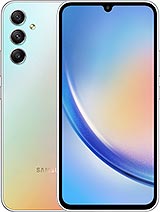Xiaomi Redmi Note 13 Pro 4G review

The competition
The Redmi Note 13 Pro 4G can be had in either an 8GB/256GB base variant or a 12GB/512GB one. At the time of writing, pricing is set at around €300 or rather about €325 for a base unit in Europe and €350 for the higher-end tier. That effectively makes the Redmi Note 13 Pro 4G a bit more expensive than the Poco M6 Pro, which currently retails for around €230/€255 depending on the memory tier and as we have established is basically the exact same device as the Redmi, just with a downgraded 64MP main camera. We weren't particularly impressed by its camera in our review, though, so we won't go out of our way to recommend the Poco.

What you can look into, however, from the recent crop of Redmi and Poco devices is arguably the Poco X6 Pro. Sure, it is a bit more expensive than the Redmi Note 13 Pro 4G, with its base 8GB/256GB model coming in at around €350. However, the extra price does offer some niceties like 5G connectivity and 4K video capture, courtesy of the Dimensity 8300 Ultra chipset - a much more potent part than the Helio G99 Ultra. You also get a nicer 12-bit, HDR10+, and Dolby Vision certified AMOLED display. And while you might have to settle for less storage, the Poco X6 Pro has faster UFS 4.0 chips compared to UFS 2.2 on the Redmi. Other than that, the two phones are nearly identical, except for the main camera setup.



Xiaomi Poco X6 Pro • Xiaomi Poco F5 • Samsung Galaxy A34
Speaking of Xiaomi devices, the Poco F5 is another excellent choice. Its display, while not as bright as the one on the Redmi, is, again, HDR10+ and Dolby Vision certified and 12-bit. Once again, it comes with faster storage than the Redmi, though with UFS 3.1 instead of UFS 4.0 chips. However, the highlight of the Poco F5 is arguably its Snapdragon 7+ Gen 2 chipset, which offers a lot of power for its price segment. Not to mention 4K video capture and Wi-Fi 6.

Over at camp Samsung, a budget of around €300 to €350 actually stretches a long way. At current pricing, you can afford the Galaxy A25. However, just like on the Redmi Note 13 Pro 4G, you will have to live with 1080p video capture. So perhaps only consider the A25 if you really value being on a "current-gen" device. If that is less of a concern for you, then the Galaxy A34 seems like a better deal overall and seems to even cost less on average than the A25. The A34 delivers IP67 ingress protection, an excellent 120Hz AMOLED display, a pretty solid camera setup, stereo speakers and a 5,000 mAh battery that might not charge as fast as the Redmi, but we found it to do very well in our battery testing. You could also stretch your budget a little and go for the Galaxy A54. It does come with a relatively smaller display than the A34, but one that is HDR capable, and you get some other niceties like Wi-Fi 6, for instance.
Our verdict
The Redmi Note 13 Pro 4G is a pretty well-rounded budget device. It is hard to pinpoint any area in which it outright fails. If we still had to express some wishes, a better chipset would probably be up there. While the Helio G99 is not necessarily strapped for power, it features compromises like 4G connectivity and 1080p video capture. That's neither here nor there since. Apparently, Xiaomi has identified the need for a 4G device in this spot in its lineup, given that it has the equally-equipped Poco M6 Pro with the same chipset and limitations also on offer.
Unlike the Poco, however, the main camera on the Redmi Note 13 Pro 4G is not nearly as mediocre. The 200MP snapper is actually quite likable and versatile thanks to its excellent zoom capabilities without giving up too much quality.
Xiaomi could have also addressed some other issues, like the lack of HyperOS at launch.

On the flip side, we enjoyed the 120Hz AMOLED display on the Redmi Note 13 Pro 4G. It gets plenty bright, especially for a budget device, and Xiaomi's software refresh rate handling is quite good. The hybrid stereo speaker setup is also quite decent overall, and we appreciate the inclusion of a 3.5mm audio jack as well as an IR blaster. We realize it's an increasingly niche and legacy feature, but we still think it is a nice value-added feature, just like the onboard FM receiver. The Redmi Note 13 Pro 4G also managed solid battery life and pretty fast charging.
Overall, we like the Redmi Note 13 Pro 4G a bit more than its Poco M6 Pro doppelganger for the improved main camera. The rest of the device delivers solid value and a well-rounded product for the price. We aren't saying it's the best value proposition out there, but prospective buyers won't be disappointed.
Pros
- Interesting-looking IP54-rated design.
- Bright OLED, 120Hz, small notch.
- MicroSD slot.
- Good speakers.
- Good battery life, fast to charge.
- Adequate performance, little to no throttling.
- Dependable camera performance.
- Expandable storage; a 3.5mm audio jack and IR blaster.
Cons
- No 5G connectivity.
- Virtual proximity sensor.
- Does not ship with Xiaomi's latest HyperOS, but gets MIUI 14 and Android 13 out of the box with plenty of ads in the UI.
- Video capture is limited to 1080p.
Reader comments
- Awais
- 12 Jan 2025
- 6Pu
No
- Anonymous
- 20 Nov 2024
- uRB
I am using it since almost 4 months now. Overall performance is I can say very good except Battery timings . 67W charger is excellent not over all backup is pathetic specially when Brightness is full or even it's high. 200MP Camera doesn't ...
- Anonymous
- 29 Oct 2024
- gE$
Hi, Is "Vlog mode" included in this model?

